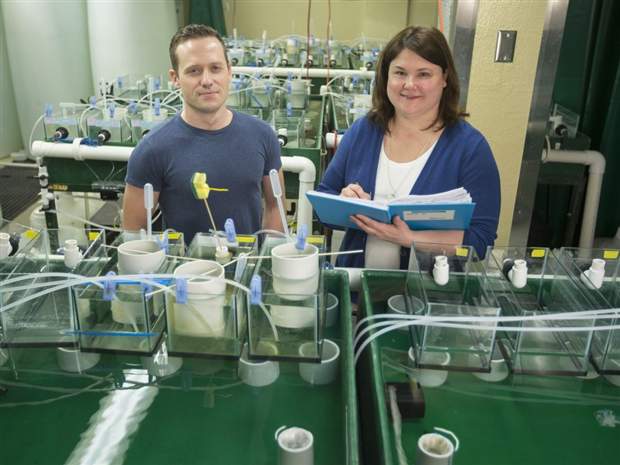
Delta Dialogue Network aims to highlight river water issues
Research funded in part by the Global Institute for Water Security may help guide changes in water-flow management to minimize environmental effects on fish.
This article originally appeared in The LeaderPost on December 19. To view the original, click here.
Two University of Saskatchewan graduate students are taking very different research approaches to help improve people’s lives in western Canadian river deltas.
In the Saskatchewan River Delta, which crosses Saskatchewan and Manitoba, Derek Green is examining how varying flows from the E.B. Campbell hydroelectric dam affect fish growth and how mercury is retained in fish, even at safe concentrations.
Sarah Baines studies water policy in Alberta’s Peace-Athabasca Delta to promote the inclusion of indigenous water needs and uses, such as hunting and transportation, into government decision-making.
Both projects are part of the U of S-led Delta Dialogue Network, which brings together researchers, communities and decision-makers to study and solve water issues in three Canadian river deltas.
“We need to keep both our indigenous and western eyes focused on making deltas healthy,” said Toddi Steelman, executive director of the U of S School of Environment and Sustainability and Baines’ supervisor. “If deltas are healthy, people will be healthy. So we need to get to work.”
Working with SaskPower and indigenous communities, toxicology student Green spent three summers catching fish to compare sizes and mercury concentrations in fish upstream and downstream from the hydroelectric dam.
“Derek found that mercury concentrations in fish have been dropping since the 1970s. These are now at a level considered safe to eat the fish,” said Tim Jardine, professor at the U of S Toxicology Centre and Green’s supervisor, noting that the local fishery was briefly closed in early 1970s due to health concerns over mercury in the fish.
Jardine and Green say airborne mercury due to worldwide burning of fossil fuels may have combined with the run-off from a former chemical plant 400 kilometres upstream, causing pollution of the area between the 1960s and 1970s.
Green also found evidence that fish downstream are smaller, with higher concentrations of mercury in their bodies. He suggests the smaller size and increased concentrations could be caused by multiple factors, including altered water flows that vary daily by more than one meter and appear to affect fish growth.
His research, funded by NSERC, SaskPower and the U of S Global Institute for Water Security, may help guide changes in water-flow management to minimize environmental effects on fish.
“There is always an environmental cost, even with hydroelectric power,” Green said. “But we can find a balance between what the environment needs and what people need.”
Sarah Baines has interviewed members of indigenous communities and government representatives to understand how the province incorporated indigenous perspectives on water management into the Lower Athabasca River Region water policy.
The policy takes into account a concept developed by indigenous communities called Aboriginal Base Flow, a benchmark of minimum water flow rates for safe river navigation.
“I hope my research will help government representatives and indigenous communities understand each other’s views so that future decisions can meet diverse water flow needs,” Baines said.
Funded by the federal agency SSHRC and Parks Canada, Baines will identify which institutional, cultural, social and economic factors may have influenced the decision-making process.
- This article first ran as part of the 2016 Young Innovators series, an initiative of the U of S Research Profile and Impact office in partnership with the Saskatoon StarPhoenix. Article by Federica Giannelli, photo by David Stobbe for the University of Saskatchewan.
